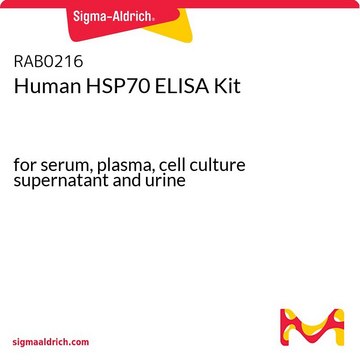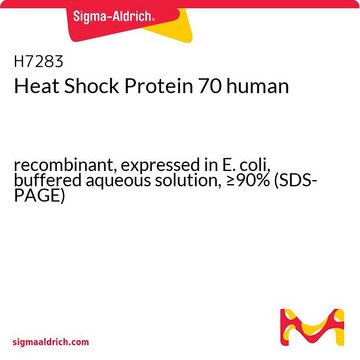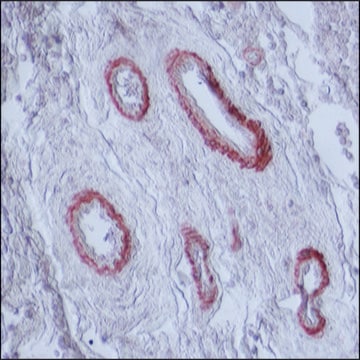SRP0182
Hsp90a Active human
recombinant, expressed in E. coli, ≥80% (SDS-PAGE)
Sinonimo/i:
HSP86, HSPCAL3, Heat shock protein 90 kDa α, LAP2, NY-REN-38 (renal carcinoma antigen)
About This Item
Prodotti consigliati
Origine biologica
human
Ricombinante
expressed in E. coli
Saggio
≥80% (SDS-PAGE)
Stato
aqueous solution
Potenza
≥8 nM
PM
85.5 kDa
Confezionamento
pkg of 200 μg
Condizioni di stoccaggio
avoid repeated freeze/thaw cycles
Concentrazione
>0.02 mg/mL
N° accesso NCBI
N° accesso UniProt
Condizioni di spedizione
dry ice
Temperatura di conservazione
−70°C
Informazioni sul gene
human ... HSP90AA2(3324)
Descrizione generale
Applicazioni
Azioni biochim/fisiol
Stato fisico
Nota sulla preparazione
Avvertenze
Danger
Indicazioni di pericolo
Consigli di prudenza
Classi di pericolo
Eye Irrit. 2 - Repr. 1B - Skin Irrit. 2
Codice della classe di stoccaggio
6.1C - Combustible acute toxic Cat.3 / toxic compounds or compounds which causing chronic effects
Classe di pericolosità dell'acqua (WGK)
WGK 1
Scegli una delle versioni più recenti:
Certificati d'analisi (COA)
Non trovi la versione di tuo interesse?
Se hai bisogno di una versione specifica, puoi cercare il certificato tramite il numero di lotto.
Possiedi già questo prodotto?
I documenti relativi ai prodotti acquistati recentemente sono disponibili nell’Archivio dei documenti.
Il team dei nostri ricercatori vanta grande esperienza in tutte le aree della ricerca quali Life Science, scienza dei materiali, sintesi chimica, cromatografia, discipline analitiche, ecc..
Contatta l'Assistenza Tecnica.










